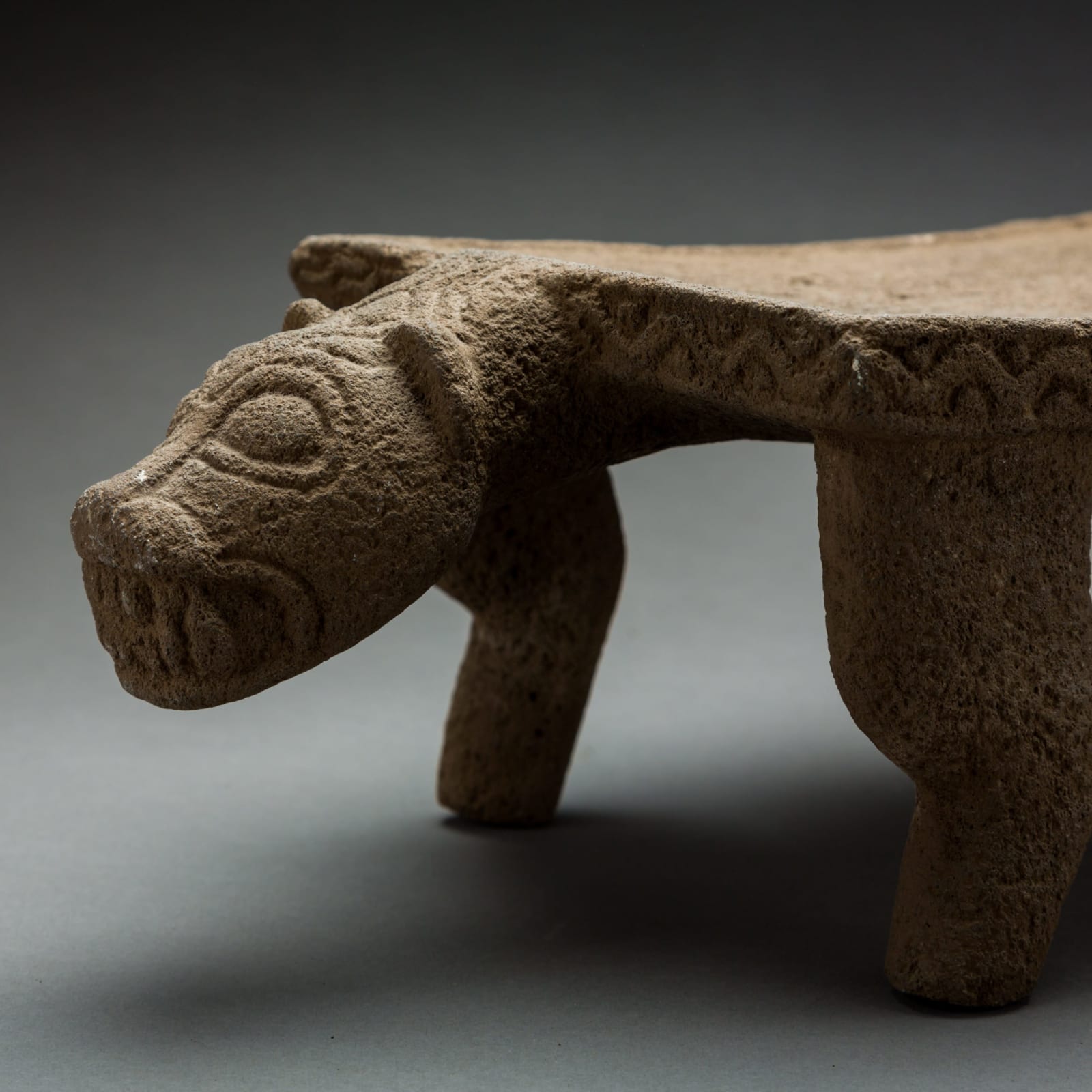Bankoni Terracotta Bird Vessel, 12 Century BCE - 15th Century CE
Terracotta
4.2 x 7.5
BF.027 (LSO)
Further images
This zoomorphic flask was made by the Bankoni people of the Mali Empire, between the 12th and 15th centuries AD. It is a complex example of the genre, with a...
This zoomorphic flask was made by the Bankoni people of the Mali Empire, between the 12th and 15th centuries AD. It is a complex example of the genre, with a globular body narrowing to an elongated neck and the head of a bird, whose wings are rendered as flanges which resemble handles. It is bearing a chick upon its back, which is rendered as an identical yet miniature form. The bottom 1/3 of the main body is decorated with incised lines that encircle the circumference. The plain sections of the flask are further decorated with hatched, incised motifs. The head bears a crest, and the throat a crop.
The Bankoni is strictly speaking a ceramic style, which – along with the Djenne style - was the main stylistic subdivision of the Malian Empire. The Djenne and Bankoni styles ran contemporaneously and were based around the cities of Djenne-Djenno and Bamako, respectively.
Djenne and Bankoni sculpture is highly significant in the development of West African art styles. In simplistic terms, their central preoccupation was seated, standing and kneeling human figures, in addition to equestrian and zoomorphic/anthropomorphic divertimenti. Djenne pieces tend to be naturalistic, while Bankoni sculptures tend towards elongated proportions. Owing to the popularity of these pieces, sites have been systematically plundered so we know almost nothing of their culture beyond its evident refinement. It was evidently highly socially stratified, with major markers of wealth including scarifications, jewellery, horses and prestige artefacts such as the sculptures themselves.
Objects such as this have long posed a puzzle to African art historians. They are mostly found in graves, but it is unclear whether they also had a function in everyday activities, or were made specifically as burial goods. It has been suggested that they were rattles, or alternatively that they represent sacrificial animals so that sacrifices could be made without losing valuable livestock. Their obvious lack of utilitarian function has led to the theory that they were devotional objects of some sort, but little more can be ascertained without further information.
The Bankoni is strictly speaking a ceramic style, which – along with the Djenne style - was the main stylistic subdivision of the Malian Empire. The Djenne and Bankoni styles ran contemporaneously and were based around the cities of Djenne-Djenno and Bamako, respectively.
Djenne and Bankoni sculpture is highly significant in the development of West African art styles. In simplistic terms, their central preoccupation was seated, standing and kneeling human figures, in addition to equestrian and zoomorphic/anthropomorphic divertimenti. Djenne pieces tend to be naturalistic, while Bankoni sculptures tend towards elongated proportions. Owing to the popularity of these pieces, sites have been systematically plundered so we know almost nothing of their culture beyond its evident refinement. It was evidently highly socially stratified, with major markers of wealth including scarifications, jewellery, horses and prestige artefacts such as the sculptures themselves.
Objects such as this have long posed a puzzle to African art historians. They are mostly found in graves, but it is unclear whether they also had a function in everyday activities, or were made specifically as burial goods. It has been suggested that they were rattles, or alternatively that they represent sacrificial animals so that sacrifices could be made without losing valuable livestock. Their obvious lack of utilitarian function has led to the theory that they were devotional objects of some sort, but little more can be ascertained without further information.
4
of
4





